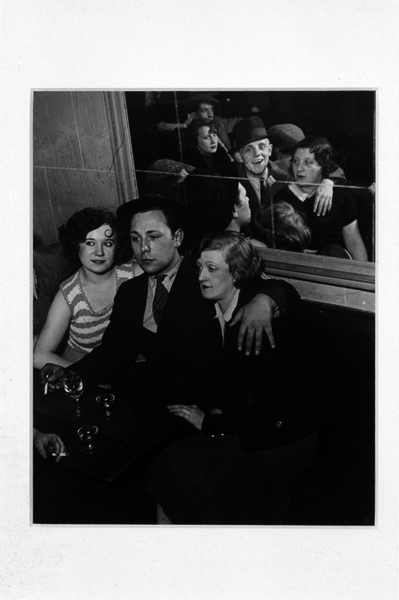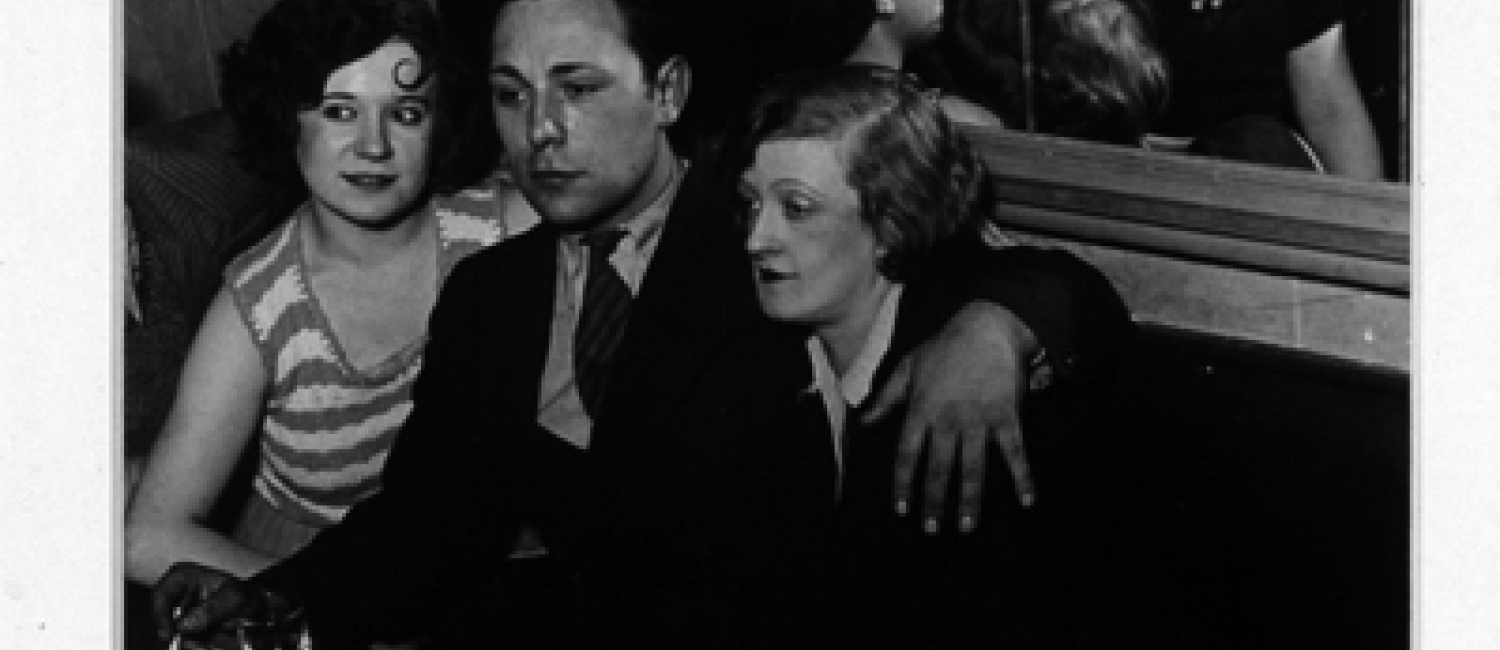He went to Paris that he did not know anything about photographing. He was supported by Tihanyi and Kertész, who had already lived there. They introduced him to other artists, too. In his albums he could grab the very essence of the mundane Paris at night that were published in a couple of years in a way that could not be done by anyone since Toulouse-Lautrec and Adget. In no time he became more Parisian than most of those who were born there. He became an artist not as a photographer; he chose photographing when he was already an artist. He became immortal as a painter, a photographer and a writer alike.
Károly Kincses
Born Gyula Halász, Brassaï (1899-1984) was probably the best known Hungarian photographer besides André Kertész, whose career started in Paris in the 30s. Halász, who was born in the town of Brasso (now in Romania), studied in Budapest and Berlin, earned his living as a correspondent and caricaturist, but whose ambition was to paint, finally moved to Paris in 1924. Backed by intellectuals such as those of the Hungarian colony in Paris, Henry Miller and Lajos Tihanyi, he immersed himself in the nightlife of Paris, for the recording of which he started to use a camera. ‘I realised that photographing is a special medium of our age. When in 1930 I became conscious of this, everything changed immediately’, he wrote. He took photos in cafés, brothels and dark streets. His first photo album, Paris de Nuit (Paris at Night) was published two years later, which was an ultimate success and which is still considered as one of the most seminal books in the history of photography. Soon after this he compiled Secret Paris, the pair of his first album on the Paris underworld, which was published only forty years later.
In the early 30s he met surrealist artists as well as the group of the Minotaure arts magazine. He befriended geniuses such as André Breton, Salvador Dali, Giacometti, Tristan Tzara, Man Ray, to name a few. He also met Matisse, Léger, Le Corbusier. Last but not least, his friendship with Picasso, which lasted until the artist’s death, resulted in a highly acclaimed book, Conversations with Picasso (1964-1965). He took photos of Picasso’s pictures and his studio on a continuous basis and made portraits and interiors at other artists’, which were published in Harper’s Bazaar for 25 years (Artists of My Life, 1978).
During World War II he stayed in Paris and turned to his earlier discipline of drawing. In 1943 he wrote a book on life in the city under occupation, the title of which was Bistro Tabac. After the war had ended he made designs for the settings of Le Rendez-vous (text by Jacques Prévert, music by Joseph Kozma) and designed photograph-based settings for other performances, too. In 1948 he married Gilberte-Mercédes Boyer. He made sculptures inspired by round shaped stones he found in the Pyrenees. In 1956 he shot a film, Until Animals Exist, which received an award for the most original film at the Cannes Film Festival. His exhibition Graffiti at the New York Museum of Modern Arts, a collection of photos taken of graffiti in Paris caused a great stir.
Until his death in 1984 the audience could see his paintings and photographs at a number of exhibitions. By then he was a renowned artist, who received numerous awards, including the Cross of the French Legion of Honour. He was buried at the Montparnasse Cemetery.
This exhibition, which has been organised by the Centre Pompidou in Paris, gives a comprehensive picture of Brassaï’s oeuvre. The two hundred and twenty photographs and drawings on view are grouped by theme (Night, Day, Minotaure, Drawings, Transmutations and Graffiti). Despite negotiations from the mid 80’s this is the first time that Brassaï’s works are seen in Hungary. This is the reason why the exhibition is so unique.
The catalogue written in Hungarian gives a selection oft the artist’s finest pictures, which are accompanied by quotations and extracts from letters written by Brassaï.
The Brassaï exhibition in Budapest has been coordinated by the Institute Française, Budapest, and the Ludwig Museum, Budapest, with the support oft the Fondation Electricité de France. The curator is Alain Sayag from the Centre Pompidou in Paris.

